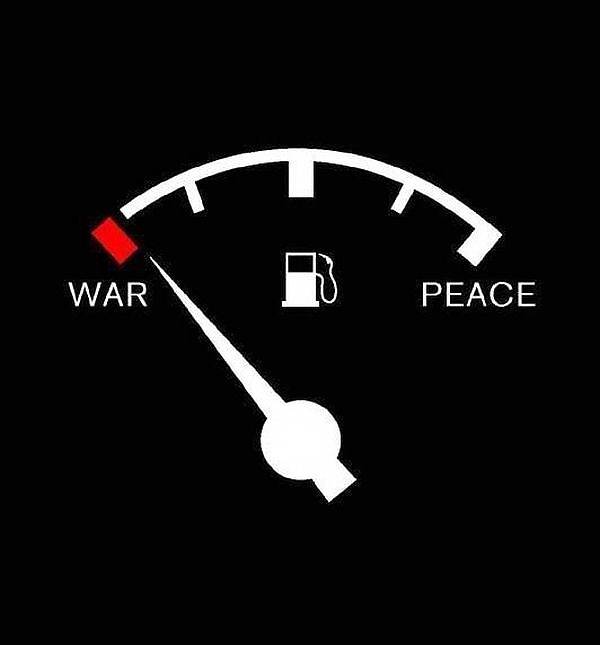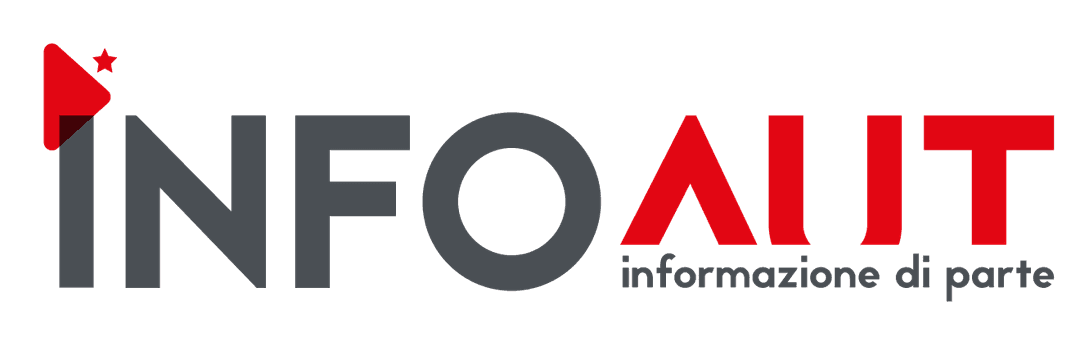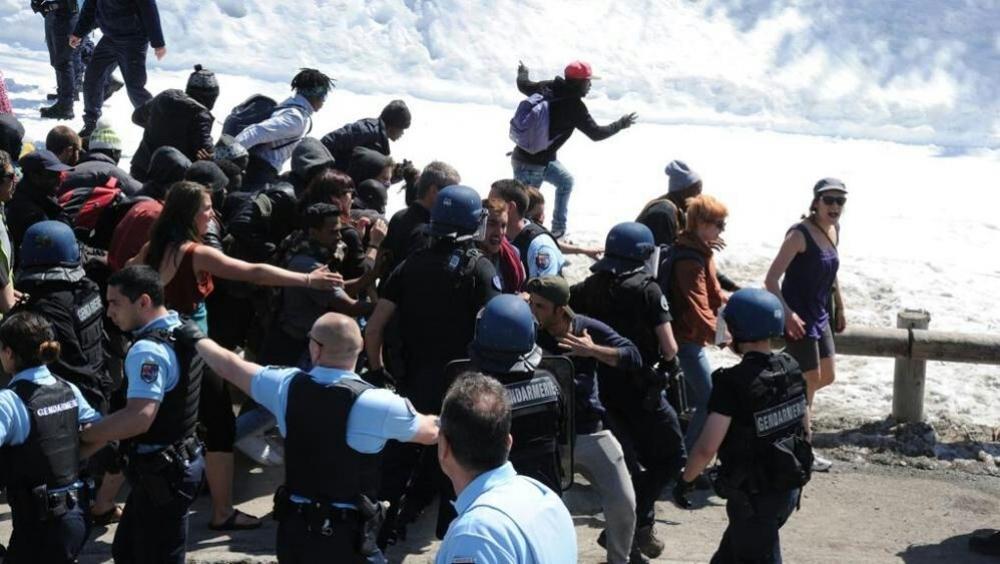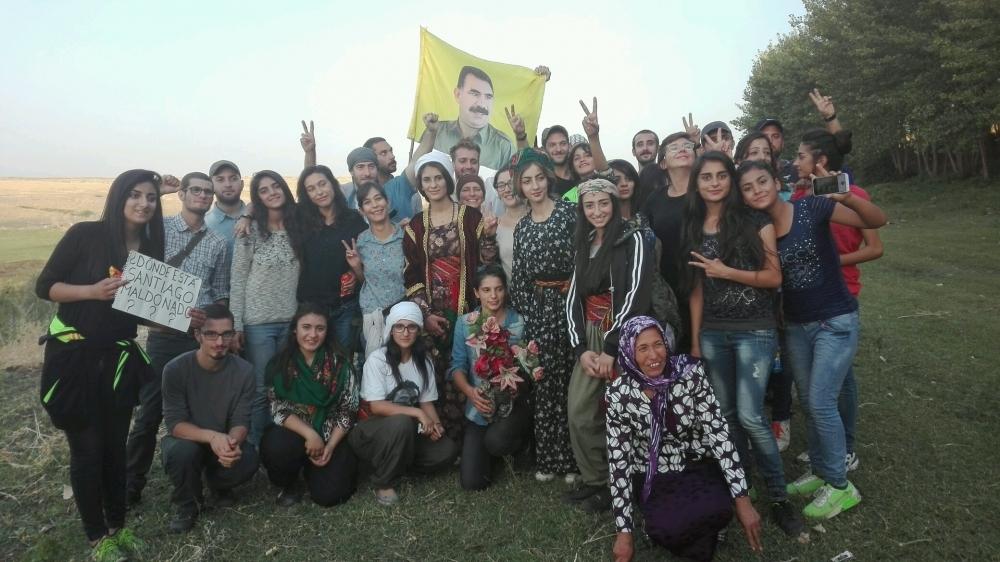
[Original article in Italian here] The oil price felt down in global markets from more than one hundred dollars to less than 70 in just 4-5 months: it is no small thing, and this trend looks far from being over. In the sub-Italian region few people are talking about this and in a wrong way, with ready-made explainations – apart from some rare exceptions – separating the topic from the whole systemic picture of global geopolitical tensions. In our country, as usual, people carefully avoid to actually raise crucial questions in politics, when these tensions are undoubtedly increasing and are achieving possible points of no-return. In other countries, at least two explainations are circulating. The first one is more strictly economical and shows this decline being linked to the diminished global request provoked by the stagnation of the Western economy and the BRICS slowdown in front of a growing supply, also fueled by the increase in the United States’ production, thanks to fracking methods.
Maybe some academic economists could believe in these “linear” supply-demand interactions, but this explaination is no longer credible for a crucial raw material such as crude oil, whose price, pegged to the dollar, strictly follows intertwined geopolitical and financial dynamics: is it enough to remember years 1973, 1979, 1985 and 1990? Moreover, in this way one could not understand such accelerated decline and its timing, nor the rationale of the OPEC response (Saudi Arabia’s, that is): to increase the production instead of cutting it at the risk of net losses. Of course, a general slowdown of the global economy and the relative increased competition are the context that allows the crude oil price drop, but we need to track down the controversial mechanisms of transmission elsewhere.
The scenarios are plain for all to see. The Ukrainian “controversy” provoked by Washington against Moscow and its escalation since February – whose last event was the “foreigners’ Governement” nomination in Kiev – in order to provoke a Russian military intervention with all its associated consequences (international isolation, definitive breach with Europe, possible internal problems, economic difficulties etc) for Moscow. And, way more connected to the first one than it seems, the increasingly “guided” chaos in Middle East, where behind the at leat ambiguous conflict against the so-called caliphate by the renewed US-Saudi Arabia coalition actually lies the goal of re-entering Syria and destroy the Assad regime, supported by the Russians and the Iranians.
Now, it is not a secret that crude oil and gas profits for Russia (and Iran) are about the half of the total. The fall of the prices almost immediately means a brutal cut on state balances and a cing of whatever economic independence, even beyond the sanctions received for the “Ukrainian affair” and the growing difficulties of financing on the international markets. In fact, this issue is largely debated on the US press. It is also clear for the Russian government, whose foreign affairs minister Lavrov is explicitly talking about an American stretegy for a
regime change in Moscow. (
http://libertyblitzkrieg.com/2014/12/01/tensions-between-the-u-s-and-russia-are-worse-than-you-realize-remarks-by-foreign-minister-sergey-lavrov/). All these elements do nothing but piling up on the structural weaknesses of the Russian economy. [3]
The Saudi strategy is a regional one: to strike the Shia presence in all its forms and bury the Iranian regime, after eliminating the Sunni rivals of the Muslim Brotherhood (i.e. the manu militari normalization of post-Tahrir Egypt) and downsizing Turkey’s aspirations. Beware: the Saudi activism, strong of its (apparently endless) ability of manipulation of the Salafist military groups, is increasingly autonomous. The renewed alliance with Washington is a convenience one – after the most deep conflicts during the so-called Arab Spring – waiting for the announced demise of a lame duck Obama, more and more blanched by the internal demonstrations of the blacks. Whereas it is increasingly deep, albeit obviously not strategical, the silent alliance with Israel – that backs in turn, without many facades by now, the anti-Assad Islamist fighters.
On the US side the new anti-Russian [4] crusade has many implications and goals. To summarize it to a great extent: frustrate the “Euroasiatic economic union” strategy, drive a wedge in the relations with Germany, break the leadership of energy supplies to Europe, make impossible any military counterbalancing in Middle East. But more in general for Washington it is a matter of taking back in their hands the global control of the energy fluxes, beefing up the flux of petrodollars and contributing to guarantee the dollar’s global domination against the de-dollarization attempts by a part of the global business that, while pivoting China in particular, recognizes in Russia an important player. The fracking, that allowed the fall in US imports, at the price of considerable environmental costs and the creation of a considerable speculative bubble – is all inside this systemic strategy, before and more than being an “innovative” field of investment that would guarantee to the US a mostly presumed energy autonomy.
Therefore Washington takes into account the flooring, with a falling oil price, of some of the do-it-yourself shale oil pits of the last years, and of some paper-finance, in favour of the Arabic peninsula producers – as for these last ones the momentary loss of petrodollars is acceptable , in exchange for the perspective of having weakened dangerous competitors, in regard to the European market (i.e. the Qatari pipeline project against the Iranian one, towards Mediterranean through Syria upon an Assad regime downfall) and to the diversification of Chinese energy imports.
The first “casualty” of this all is the South Stream project, that would have brought the Russian supplies in Center-southern Europe, working around Ukraine (for Renzi: it’s ok!). But the whole Europe is becoming a battleground for strategies decided elsewhere: is Berlin going to knock once?
Hence, what lies behind what Mike Whitney on
Counterpunch defined the outbreak of an open economic war against Russia is no small thing (
http://www.counterpunch.org/2014/12/01/defending-dollar-imperialism/). Why are the US accelerating? On the background, but not so much, the American
containment of China: in an extreme difficulty, the effort to catalyse against China the Asian nations, militarily with the
Pivot to Asia, and economically, with the
Transpacific Trade Partnership – as the recent Apec summit in Bejing emphasized – Washington is going to make scorched earth around the Chinese repositioning
away from the dollar, as in the headlines of the
Financial Times (
http://www.ft.com/intl/cms/s/0/4ee67336-7edf-11e4-b83e-00144feabdc0.html#axzz3LZpUkvnH), against the effort of creating a network of relation working around the West. And Russia is an important piece of the puzzle, not just for the energy.
The two years break of the global crisis is collapsing, winds of war come howling back…has an anti-system left something of its own to say? Or is it ready to rest on the liberal left, in the – not to be ruled out – event of an open war in Ukraine?
December 11, 2014
rk
Notes
[1] According to the sources, that was agreed upon on last September during a meeting among Kerry and the Saudi king.
[2] In Italy very few people talked about that: Floros and Alberto Negri on the last 28 November Sole24ore.
Ti è piaciuto questo articolo? Infoaut è un network indipendente che si basa sul lavoro volontario e militante di molte persone. Puoi darci una mano diffondendo i nostri articoli, approfondimenti e reportage ad un pubblico il più vasto possibile e supportarci iscrivendoti al nostro canale telegram, o seguendo le nostre pagine social di facebook, instagram e youtube.






















